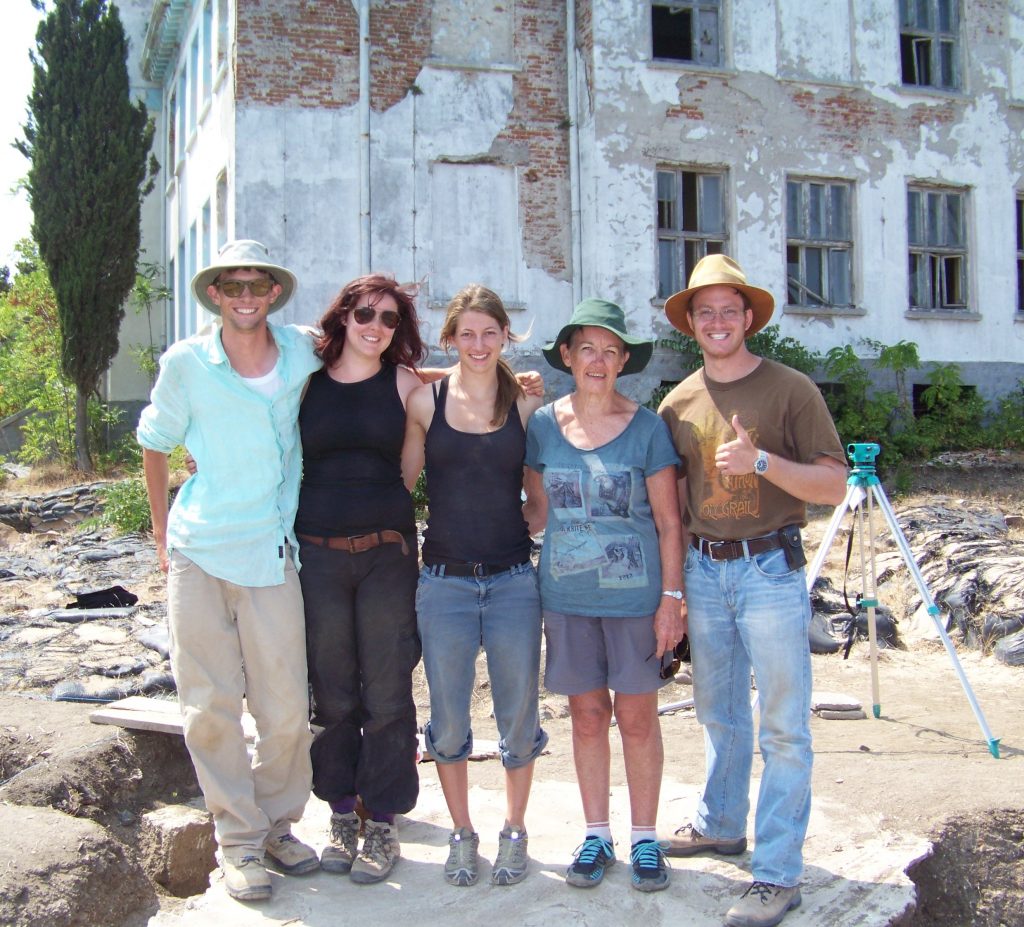Schueller shares excavation experiences

Matthew Schueller
Classical Archaeology Graduate Student
Thanks to the aid of the Harland Endowment Fund, last summer I was able to travel to Bulgaria to participate in two excavation projects led by Balkan Heritage, a non-profit cultural heritage organization based out of Stara Zagora, Bulgaria. I was a participant at a Balkan Heritage field school at Heraclea Lyncestis in the Republic of Macedonia in 2009 and for the next three summers worked with Balkan Heritage there as a field supervisor and instructor. I was thus eager to join Balkan Heritage last July at Emporion Pistiros, a site located outside the town of Septemvri in southwest Bulgaria, and during the first half of August on St. Kirik Island, off of Sozopol on the southern Black Sea coast.
Because of my past work in the Republic of Macedonia with Balkan Heritage, I became interested in the Roman archaeology of the region of Macedonia. My interests also began to include the Roman archaeology of Thrace. Therefore, I wanted to travel to and excavate in Bulgaria last summer to increase my knowledge and appreciation of the history and archaeology of ancient Thrace. I definitely feel that my experiences last summer in Bulgaria informed my general academic interests and strengthened my particular interest in and knowledge of the ancient region of Thrace.
For example, one of my primary interests is in the cultural complexities resulting from the “dialogue” between local and invasive cultures, particularly during Roman times. Excavation at Emporion Pistiros, an inland trade center for local Thracians and Greek traders founded in the late 5th century BC, informed this interest in that the site’s finds demonstrated lively interest in Greek material culture, represented by plentifully imported Greek red-figure vessels. Along with this interest and trade in “foreign” material culture, excavation has also revealed an adherence to local Thracian ritual forms, as seen in deep ritual pits sometimes topped by clay platforms. Furthermore, in traveling around Pistiros to areas like the Valley of the Thracian Kings, I was saw how central Thracian rulers of the late 5th and 4th centuries BC embraced Greek cultural habits and styles to show off their power and wealth.

Excavation on St. Kirik Island off of modern Sozopol, ancient Apollonia Pontica, on the Black Sea presented me with another scenario of cultural interaction. I learned how the colony of Apollonia Pontica, founded by Greeks from Miletus in the mid-7th century BC, initially seemed to constitute a Greek cultural presence with trade links with but mostly isolated from local Thracian communities. This is evidenced by the characteristically Greek Archaic period material we found this season on St. Kirik. This situation would of course come to change over the next two centuries. Learning about the history of Apollonia Pontica also generally informed my knowledge of Rome’s relations with cities in Thrace in that the colony represented one of those communities that came into conflict with Roman ambitions and thus did not stand out as significant during Roman times but only again during the 5th and 6th centuries AD.
My excavation experiences at Emporion Pistiros and on St. Kirik Island and my travel to other sites and museums around them greatly enhanced my interest in and knowledge of the ancient region of Thrace. Additionally, with regard to my primary academic interest in Roman archaeology, I am now better able to understand the historical and cultural contexts of the Roman period in Thrace. In the summers to come, I fully intend to continue to work with Balkan Heritage and to thereby further cultivate my interests in and knowledge of the Greek and Roman archaeology of the ancient regions Macedonia and Thrace.